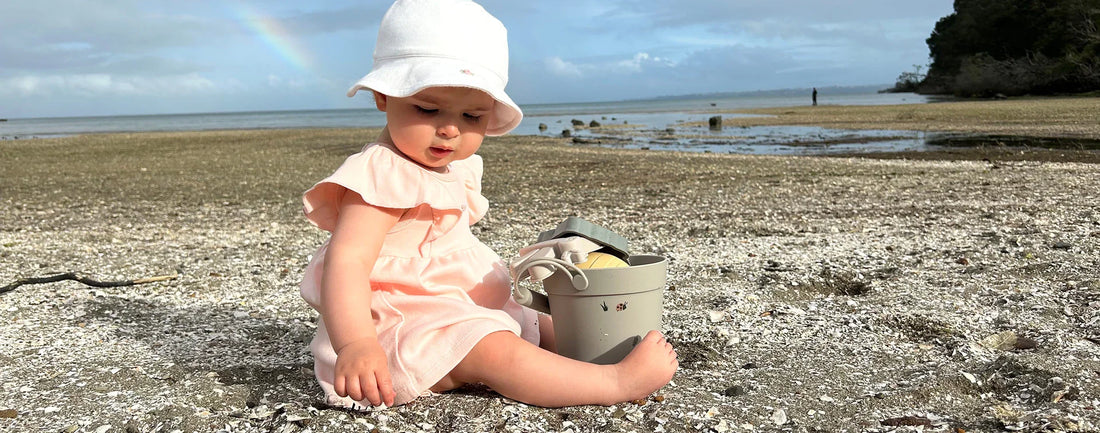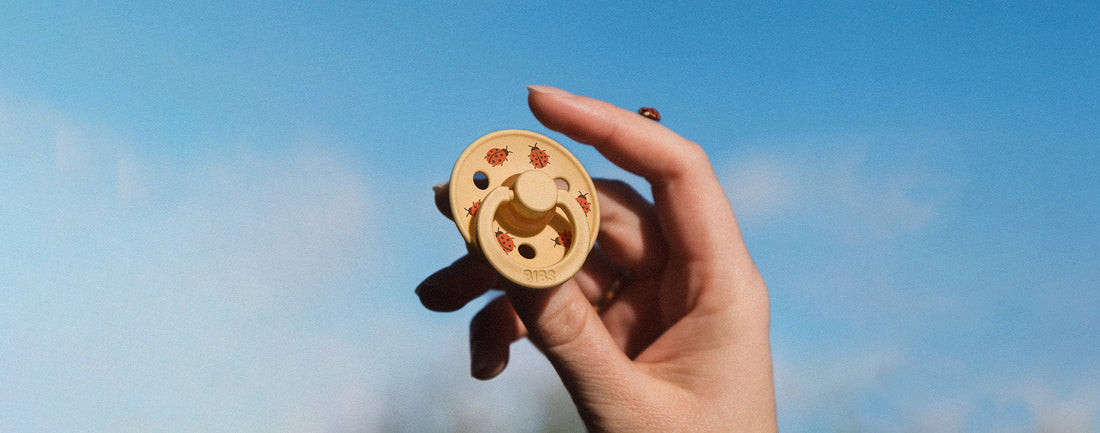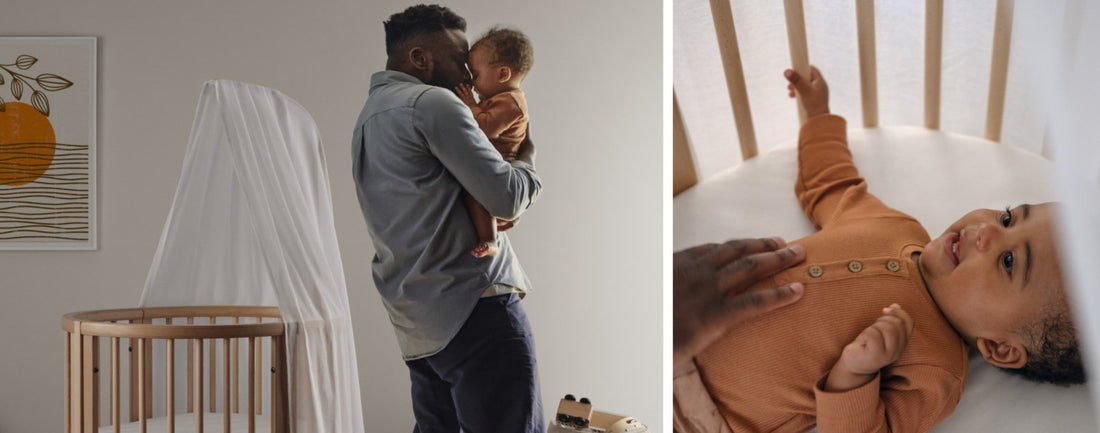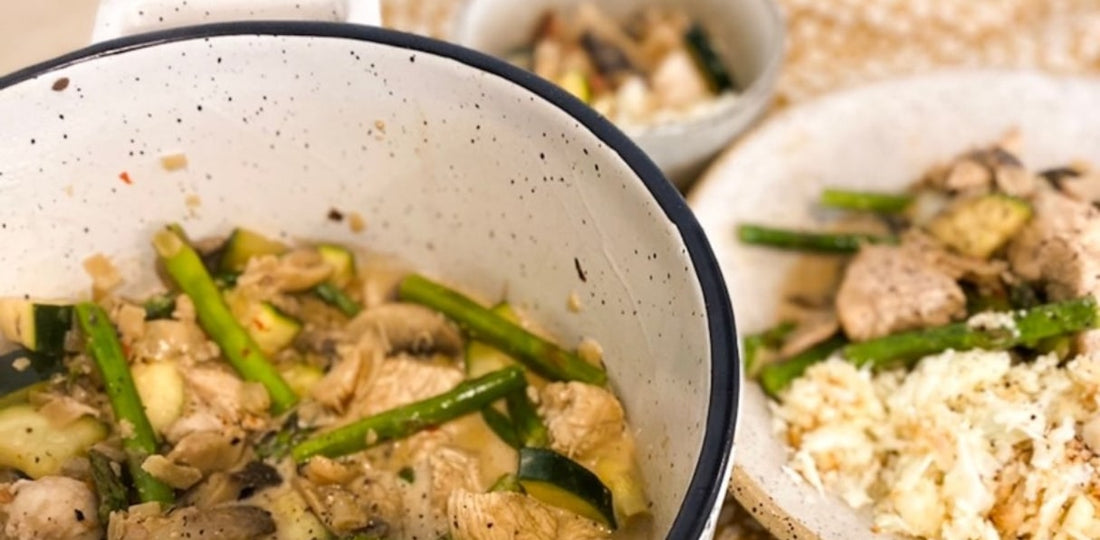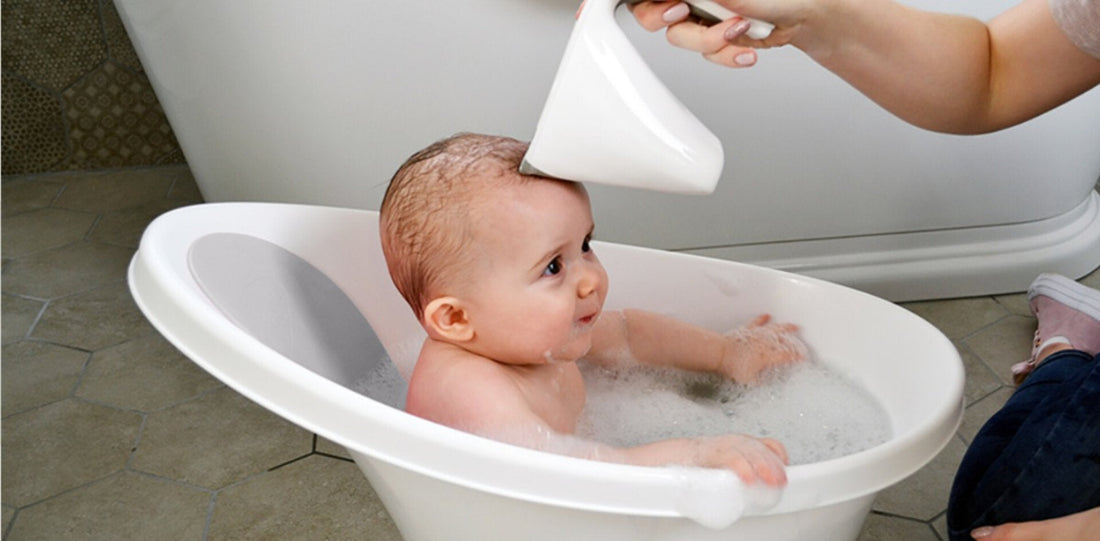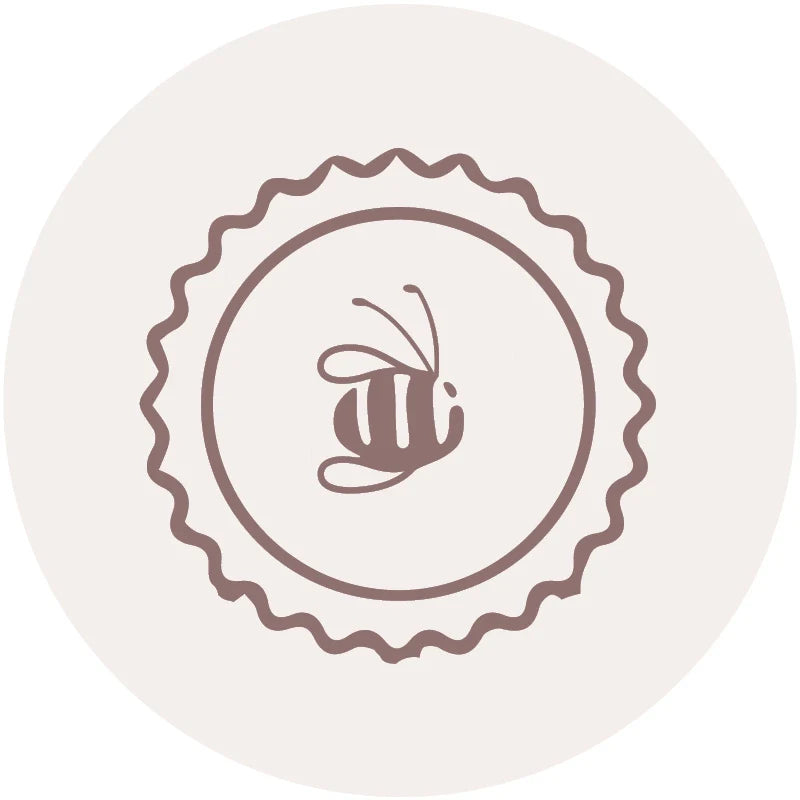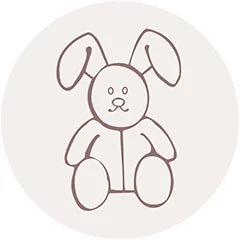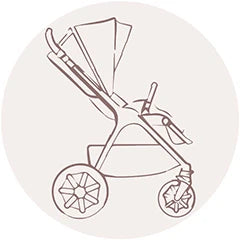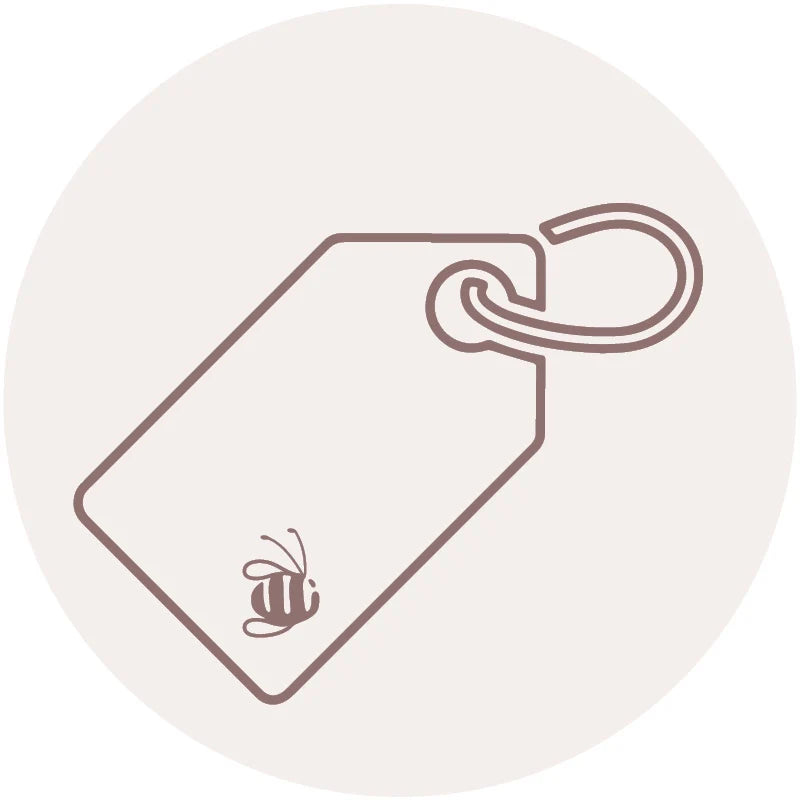Post
Ready to Pack your Beach Bag with Us?
Beach Days Made Easy ☀️ Summer’s here — and if you’re heading to the beach with a baby in tow, you’ll know that travelling light is officially a thing of the past. Gone are the days of throwing a towel and book in a tote and calling it a day. But the good news? Dimples has you covered with all the practical, beautiful beach day essentials to keep your little one protected, comfy, and stylish — and make your life just a little bit easier. 🎒 Pretty Brave Stella Baby Bag The Stella Baby Bag from Pretty Brave is the kind of multitasking hero that every parent needs. Spacious enough to carry all your beach-day essentials, yet stylish enough to double as your weekend bag, it’s designed for real life — sand and all. Inside, you’ll also find a padded change mat that makes those on-the-go nappy changes a breeze. Pack everything from snacks and sunscreen to spare togs and toys — there’s room for it all, without feeling bulky or overstuffed. 🏖️ Wildride Toddler Carrier Ditch the bulky buggy and embrace beach freedom with the Wildride Toddler Carrier. Whether you're navigating sandy paths or just don’t want to wrestle a pram through the dunes, this stylish hip carrier is a smart alternative for toddlers aged 9 months to 4 years (up to 20kg). Ergonomic, compact, and quick to throw on, it offers support without the strain - perfect for when little legs get tired or you’re trying to keep both hands free. Bonus: it folds up small and easily fits into your beach bag when not in use. 🌊 Crywolf Baby & Kids Swimwear Splash-ready and sun-smart, Crywolf swimwear is a go-to for little adventurers. Each piece is made from recycled fibres, offering high protection from the sun while being gentle on the planet. The prints are playful, the coverage is practical, and the quality is built to last - so you can focus on the fun knowing your child is comfy, covered, and looking cute as ever. 🕶️ IZIPIZI Sunglasses Keep those little eyes protected in style with IZIPIZI sunglasses. With 100% UV protection, these sunnies aren’t just adorable — they’re essential for sunny days, whether you’re at the beach, on a walk, or relaxing in the backyard. Available in sizes for babies right through to big kids, IZIPIZI offers thoughtful, lightweight designs that stay on (yes, even on the wriggly ones) and suit every stage. 🌞 Nude Alchemist SPF30 Natural Sunscreen This gentle, broad-spectrum SPF30 sunscreen is specially formulated for delicate skin — making it a family beach bag essential. The Nude Alchemist Natural Sunscreen is made with non-nano zinc oxide for effective sun protection, plus nourishing natural ingredients like shea butter and jojoba oil to soothe and hydrate. Free from harsh chemicals, parabens, and artificial fragrances, it’s safe for babies aged 3 months and up. It’s also reef-safe, water-resistant, and rubs in smoothly with minimal whitening. Just good, honest sun care you can feel great about. 🐚 Over the Dandelions Hooded Muslin Towel Wrap your little one in soft, breathable comfort after a splash in the sea. The Over the Dandelions Hooded Muslin Towel is made from 100% GOTS-certified organic cotton muslin — lightweight, absorbent, and quick-drying, even on those humid summer days. Its generous size and gentle texture make it perfect for drying off, cuddling up, or providing a little shade on the walk back to the car. A must-have for warm-weather adventures. 👒 Dimples Sunhat No beach kit is complete without a good sunhat, and Dimples makes this essential extra lovely. Designed with a wide brim to help shade baby’s face and eyes, these hats are made from soft, breathable fabrics in timeless colours and textures that mix and match effortlessly. Cute, comfy, and protective — it’s the kind of hat you’ll reach for every time you head outdoors. ☀️ Ready, Set, Sun Whether you’re headed to the coast, the local splash pad, or just your own backyard, Dimples has everything you need to make the most of summer with your little one. Thoughtfully chosen, beautifully made, and ready for real life. Pop in-store or browse online to build your ultimate beach day kit — we’ll help you pack like a pro.
Learn moreDimples Cotton- High Quality Designed to Last
Dimples Cotton: Naturally Better for Summer As the weather warms up, it's the perfect time to refresh your little one’s wardrobe with breathable, natural fabrics. At Dimples, we’re passionate about creating clothing that not only looks beautiful but feels good and does good too — for your baby and the planet. Our cotton is soft, strong, and certified to the highest global standards. The yarn carries GOTS (Global Organic Textile Standard) certification, and our dyeing process is certified by OEKO-TEX®, ensuring it's free from harmful substances and gentle on sensitive skin. Why Choose Cotton? Cotton is a natural fibre that’s ideal for dressing babies during warmer months. It’s breathable, absorbent, and lightweight — helping to keep your little one cool, dry, and comfortable as temperatures rise. Unlike synthetic fabrics that can trap moisture and cause overheating or irritation, cotton allows air to flow and helps prevent heat rashes by drawing moisture away from the skin. In fact, cotton can absorb up to 20% of its weight in moisture before it even starts to feel damp. At Dimples, we use only high-quality cotton that's soft enough for delicate skin but durable enough to be worn, washed, and passed down to the next little one. Caring for Your Dimples Cotton Dimples cotton is designed to be lived in — and washed often. There’s no need for special treatment here. Simply pop it in the washing machine with your everyday laundry. It’s made to last and look good doing it. Timeless Quality Inspired by the joy of childhood and the beauty of everyday moments. You’ll find a variety of silhouettes, from newborn essentials to stylish toddler pieces, all made in our signature soft cotton and designed to mix, match, and move with your little one. Our garments are made with care, built to last, and designed with timelessness in mind — so they can be loved now, and lovingly handed down later. Shop the full range Here
Learn moreChoosing a Pacifier
Finding the Right Pacifier for Your Baby From grumpy baby to soothed and settled, a pacifier can feel like magic in those early days. Whether you call it a dummy, binky, soother, or simply your lifesaver, this little item can offer big comfort – and sometimes even buy you a bit of peace and quiet. 👶🍼 As with many parenting decisions, pacifier use can spark a lot of opinions. But the good news? Whether you choose to use one or not is entirely up to you. Why use a pacifier? Pacifiers are designed to mimic a mother’s nipple and can instantly calm a fussy baby, helping them drift off to sleep, feel soothed between feeds, or stay content during a car ride or outing. If you’re hoping to stretch out time between night feeds, offering a pacifier can be a helpful strategy too. Some research suggests pacifier use may reduce the risk of SIDS (Sudden Infant Death Syndrome), though not all babies take to them. If your little one isn’t interested, there’s no need to force it – every baby has their own preferences. When should I introduce one? If you’re bottle-feeding, you can introduce a pacifier whenever you feel ready. If you’re breastfeeding, it’s generally recommended to wait until around 4 weeks – just to give your baby time to establish a solid latch without confusion. Most babies will let you know when they’re keen – usually after a feed or when they’re settling to sleep. And if it’s not the right time, don’t worry. They’re excellent at spitting it out! How to choose the right pacifier Trial and error is often your best guide when it comes to pacifiers. Babies can be picky – what works for one might not work for another. At Dimples we offer a wide selection of shapes, sizes and materials to help you find the perfect match. Here are a few things to consider: Material: Latex is a natural rubber that’s soft and flexible – ideal for newborns. It does have a shorter lifespan and should be replaced every six weeks. Silicone is more durable, easy to clean, and tends to last longer. Always inspect pacifiers regularly for cracks or wear. Shape: Rounded nipples are usually preferred by breastfed babies as they mimic the motion of breastfeeding and can help avoid nipple confusion. Orthodontic nipples feature a flattened bottom and rounded top to support the natural development of your baby’s jaw and palate. Size: Choose a pacifier suited to your baby’s age – from newborn through to 18 months+. A good fit reduces choking risks and makes the experience more comfortable. Hygiene & comfort: Look for pacifiers with air holes and a curved shield to reduce skin irritation. Dishwasher-safe options and machine-washable materials make cleaning simpler. Pacifiers at Dimples 🐝 We stock a carefully chosen range of quality pacifiers, including: Frigg – With a stylish Scandinavian look, Frigg pacifiers come in both classic and daisy-shaped shields. The rounded cherry-shaped nipple and outward curve help keep the pacifier off baby’s skin. Available in two sizes: 0–6 months and 6–18 months, and a wide range of clean aesthetic colours and shapes. BIBS – These iconic Danish pacifiers are made with 100% natural latex rubber, and feature a retro-style shield and nipple. Their outward-facing design helps reduce skin irritation. Available in two sizes: 0–6 months and 6–18 months with an extensive and super fun colour range in-store and online. NUK – These are made from 100% sustainable materials using a certified mass balance approach, making them a great choice for eco-conscious parents. The original shape is inspired by nature to support healthy oral development while being particularly soft, breastfeeding-friendly, and soothing for 99% of babies, including a smaller size 0 for tiny newborns. Don’t forget a pacifier clip and holder! Babies are total experts at making things disappear. Pacifier clips help keep dummies close by and off the ground (or out of the abyss under the car seat) and can help to keep them cleaner, for longer. Mushie and Bibs both make a stylish range of clips. You don't have to sacrifice looks for practicality – you can even match them to your baby’s outfit! Shop our range of accessories here. When it's time to say goodbye 👋 Eventually, the pacifier days will come to an end. Phasing it out around 6–7 months can make the transition smoother – it’s before strong emotional attachment sets in, and the SIDS risk has decreased. But if your toddler keeps one a little longer, don’t panic. As long as they’re not using it all day and night, there’s minimal risk to their speech or dental development. Final thoughts If a pacifier brings comfort to your baby (and sanity to you), go for it. Just aim for moderation – using it for sleep times or moments of fussiness will make the habit easier to break when the time comes.
Learn moreWhat’s the Best Baby Monitor in 2025?
Baby monitors are a must-have for parents. They’re an invaluable tool for keeping an eye on your baby and ensuring they are safe and comfortable at all times. As technology evolves, baby monitors now come equipped with a variety of advanced features. So, what is the best baby monitor on the market today? Discover some of the standout models available in 2025, along with their key features and benefits. Do I Need a Baby Monitor? Baby monitors are highly recommended for parents who want to stay connected to their baby while juggling everyday tasks like cleaning, cooking, or working from home. They are particularly useful in larger homes, where hearing your baby from another room might be challenging, or for parents who want extra peace of mind during overnight sleep. How to Choose the Best Baby Monitor The right baby monitor can ease your mind and simplify your routine – but finding the best one comes down to a few key features: Simple setup and use A good monitor should be easy to install and intuitive to navigate, whether it uses buttons, a touchscreen, or connects to your phone. Smartphone-compatible models should pair quickly and reliably. Reliable connection Whether it runs on a local network or Wi-Fi, a baby monitor should stay connected without dropouts – even in larger or multi-storey homes. Strong battery life Look for a model that lasts at least 10–12 hours on a single charge, so you’re not constantly reaching for the charger. Clear video and audio You want to see and hear your baby clearly. Crisp audio, a good camera, and night vision all help give you peace of mind. Built to last Baby monitors should be sturdy enough to handle the occasional bump or tumble – without feeling flimsy or fragile. Best Overall Baby Monitor: Oricom 5" Smart HD Touchscreen Premium Baby Monitor For a comprehensive baby monitor with robust smart technology built-in, the Oricom 5” Smart HD Touchscreen Premium Baby Monitor is your best option. This model is well-loved for many reasons, starting with a Stargrip that allows you to position the camera wherever you like. The camera itself has a 300-metre range within line of sight and infrared night vision capabilities. What makes this the best baby monitor is its in-depth smart features, from Wi-Fi and FHSS Digital Wireless Connectivity to integration with the Hubble Club for Partners app. The app includes motion, sound, and temperature alerts, the option to create personal audio recordings, and more. You can also buy a version of this model with a cot stand for an overhead view. Oricom HD Dual Vision Camera The Oricom HD Dual Vision Camera is a smart, reliable baby monitor that offers more than just peace of mind. With two built-in lenses—standard and wide-angle—you can view more of your nursery at once. Using the free HubbleClub for Partners app (available on iOS and Android), you can stream both camera angles simultaneously to your smart device. This high-definition monitor delivers crisp 1080p video with infrared night vision, so you’ll always have a clear view. It also features motion tracking, automatic camera movement, and a temperature sensor to help you keep baby’s space just right. Built-in lullabies, nature sounds, audiobooks, and two-way talk let you soothe baby from afar—ideal for naps and nighttime routines. Smart home compatible (with Google Assistant and Alexa), sleep-tracking enabled, and designed with a secure connection and wall mount included, the Oricom Dual Vision blends innovation and comfort in one beautifully practical device. Best Breathing Monitor: Oricom Babysense 7 Breathing Movement Monitor Our last option is a different type of monitor often used alongside video or audio monitors. The Babysense 7 , the latest in Oricom’s line of breathing movement monitors, features the same reliable technology in an updated, improved design, offering parents greater peace of mind. With simple one-button activation, it’s easy to use and suitable for newborns from birth. The monitor operates through sensor pads placed under your baby’s mattress, which alert you if their breathing slows below ten breaths per minute. This monitor is part of the Australian Register of Therapeutic Goods (ARTG No. 97479), making it one of the most trustworthy monitors available. It is also battery-powered, meaning you won’t have to deal with any active power sources around your baby. Find the Best Baby Monitor for Your Little One Baby monitors can bring you peace of mind and relieve your anxiety when needed the most. Dimples has the best baby monitors available to cover your diverse needs as a parent. With streamlined options and the most modern smart technology available, we have something for everyone. Visit our baby shop in Auckland or Christchurch to browse our range of baby monitors and see which would suit your home and lifestyle the most.
Learn moreNo matter the colour, all our clothes are green on the inside
Dimples has always been a proud New Zealand brand, with strong Kiwi values. Protecting the environment is one of them. Even as we’ve grown from a home business to a larger company, that commitment hasn’t changed. The clothing industry is notoriously hard on the environment – and on the people involved. It can cause incredible environmental and social damage worldwide: from cotton farms that suck up huge amounts of valuable water, to clothing factories using harsh chemicals and exploiting their workers; from the use of fossil fuels for shipping, to ‘fast fashion’ that ends up in landfills after a few wears. We work hard to minimise our impact on the environment by keeping our production in New Zealand, using local materials as much as possible, and avoiding the factory system altogether. It’s about protecting our world long term – and making adorable, high quality baby gear at the same time. Made here, sold here Dimples clothing is produced right here in New Zealand. This lets us avoid shipping product across the world using harmful fossil fuels – it’s one of the most important ways that we reduce our environmental impact. Making our clothes in New Zealand also means that we can control the quality of our product, and the working conditions of our sewers. We know that all our clothing is produced to an extremely high standard, by workers who are paid well and treated fairly. That’s incredibly valuable. Starting from scratch Where clothing is assembled isn’t the only factor when it comes to the environment. Sourcing the raw materials – merino wool and cotton , in our case – is also important. Our merino comes from a mix of New Zealand and Australian sheep, which means the raw materials don’t have to travel very far, and we can keep an eye on the quality. New Zealand’s climate isn’t suitable for large-scale cotton production, so we import only pure, organic-certified cotton to make sure the impact of cotton farming is minimal. Small scale production Dimples started out as a home-based business, and although we’ve grown, we haven’t changed all that much. We don’t have a huge factory producing our clothing – instead, our expert sewers work from their homes. It’s essentially a scaled-up version of the small home workshop where it all started. The classic Dimples bee and rose are still hand-stitched onto every garment. This system doesn’t just result in a better quality product, it also helps us avoid the environmental costs of factory production – we don’t use huge amounts of power to run machinery, or process our materials using harsh chemicals. Made to last The end result of our high-quality materials and high production values is hard-wearing, long-lasting clothing. Our customers find that our clothing lasts through wash after wash without fading, stretching or pilling. Many customers use our clothing for multiple children, then pass it on to friends or family. This is environmentally friendly in itself – the more your child or children can wear each garment, the less you’ll need to throw away. This reduces the need for production and reduces the amount of landfill. It’s all part of our ongoing commitment to our beautiful world. We’re not green because it’s trendy or expected, we’re green because we care – and we always will. Take a look at our NZ made clothing now
Learn moreIntroducing a bedtime routine with your baby
The Power of a Bedtime Routine for Your BabySimple rhythms that lead to better sleep - for both of you In the early weeks with a newborn, life tends to move to a rhythm all on its own. Feeds, naps, cuddles, and nappy changes often blur into one another, and any sense of routine can feel a little out of reach. That’s completely normal! As your baby grows, you’ll notice more predictable patterns beginning to emerge. This is the perfect time to gently introduce a bedtime routine – a simple series of calming steps that helps your baby unwind and gives you both a peaceful finish to the day. Why bedtime routines matter Babies thrive on repetition. A consistent series of calming activities each evening helps regulate their body clock, encourages longer stretches of sleep, and creates a comforting rhythm to the day. Routines don’t just benefit sleep - they also nurture connection, ease overstimulation, and make bedtime feel less like a battle and more like a shared moment of calm. These rituals will evolve as your baby grows, but the sense of structure and predictability will continue to support their development well into childhood. When to begin You can begin easing into a bedtime routine from around six to eight weeks old - once your baby begins to show more consistent sleep and feeding patterns. This is also when they start to recognise daily cues, making it the perfect time to introduce a gentle ritual that helps them wind down. How to get started There’s no “perfect” routine - what works for one family might not suit another. The key is consistency, calmness, and keeping things relatively short (20 to 30 minutes is ideal). Try to carry out most of the routine in your baby’s room so they start to associate the space with sleep. Here’s a sample rhythm to get you started: Bath - A warm bath helps wash away the day and begins the wind-down process. This can also be a fun and playful moment, especially if older siblings are involved. Massage - After bath time, a quick massage with something like Scullys Baby Massage Oil can help your baby get ready for rest. This is a wonderful way to connect with your baby through touch, as well as being very relaxing for both of you. Sleepwear - Soft, breathable pyjamas or a sleeping gown signal that bedtime is near. You might like to use Merino to help regulate temperature throughout the night. We have a gorgeous range of safe and cosy sleepwear available here. Feeding - Try offering the final feed early in the routine rather than just before sleep. This can help reduce reliance on feeding to fall asleep. Story or song - A simple board book, soft lullaby, or even humming a tune gives your baby a consistent cue that bedtime is here. It also builds language skills and creates special bonding moments. Cuddles - A warm snuggle and quiet kiss goodnight helps your baby feel safe, even if you’ll likely see them again overnight. Watch for sleepy cues Rather than watching the clock, keep an eye on your baby. Rubbing eyes, zoning out, yawning, or fussing can all signal tiredness. Aim to start the bedtime routine before they become overtired. For most babies, somewhere between 6:30 and 7:30 pm works well, and this timing can continue into the early school years. Keep the environment sleep-friendly A dark, quiet space tells your baby’s brain that it’s time to sleep. Avoid bright lights, noisy toys, or too much stimulation. Night lights can be helpful for feeding and changes, but aren’t necessary for sleep - babies aren’t born afraid of the dark. You could add a soft and practical sleep sound machine, like a Yogasleep Nod to make night-time care easier with it's built in night light. Put baby to bed drowsy, not asleep As you get to know your baby’s cues, try placing them into bed when they’re sleepy but still awake. This helps them learn to settle themselves, which can make overnight waking easier to manage. It also reduces the shock of waking up in a different spot from where they fell asleep. Be consistent - but stay flexible Consistency is key, but so is flexibility. There’ll be times when travel, illness, or overtired evenings throw things off. The idea is to have a calming, repeatable routine you can come back to, wherever you are. If more than one caregiver can do bedtime, that helps too - it builds flexibility and avoids babies becoming dependent on one specific parent for settling. Small rituals with lasting benefits Your baby’s routine doesn’t need to be perfect, and it will change over time. But these small, daily rhythms bring more than just sleep - they offer connection, confidence, and a peaceful way to end the day together. One day, your baby will be reading their own book at bedtime. But your cuddle and goodnight kiss? That will still matter, even if you have to sneak it in after lights out ❤️
Learn moreHealth Tips for Pregnant Mums
Written by Kylie Stowe www.nourishedclinic.co.nz My name is Kylie. I am a mum of four, a Nutrition & Health Coach, and a Mindfulness Teacher.Being a busy mum myself, I’m drawn to nutrition and wellbeing for mums – an area of health that is often undervalued. Over the coming months, I’m really excited to share some practical tips, recipes and personal experiences to help you navigate these beautiful, yet sometimes challenging, times. I’m thankful that the team here at Dimples saw the need to go beyond supplying beautiful baby goods to also nourish and care for our mums. Health Tips for Pregnant Mums Focus on whole, unprocessed, nourishing foods There is a lot of pressure on pregnant mums to eat the ‘perfect diet’. This can be incredibly confusing due to the overwhelming amount of conflicting information out there. You’re not alone if this has been a source of guilt – especially when morning sickness makes eating anything but iceblocks and dry crackers impossible. Just remember, you do what you have to do to get through those early months. Nutrient requirements during pregnancy are higher, and supporting a growing baby can often deplete your own stores. Building meals from whole, unprocessed foods is a great option, as they’re rich in essential nutrients. Heavily processed foods are often low in nutritional value – hence the term “empty calories”. Think: Good quality protein such as free-range or grass-fed meats, seafood, eggs, legumes, nuts, and seeds At least four serves of colourful vegetables and two serves of fruit Whole grains like quinoa, steel-cut oats or brown rice Pasteurised dairy (if tolerated) Healthy fats like extra virgin olive oil and avocado If morning sickness makes meals tricky, smoothies can be a great way to get nutrients in. My go-to was Nuzest’s Clean Lean Protein (a high-quality powder with no fillers), nut butter, banana, berries, greens and almond milk. Hydration is also important. Aim for two glasses of water on waking (we often wake dehydrated), and another two litres throughout the day. After the first trimester, 1–2 cups of pregnancy-safe tea (like Artemis Pregnancy Tea) can also be helpful. If nausea makes hydration hard, try small sips often. Diet alone can’t always meet every nutritional need – a good quality prenatal supplement containing folate, iodine, vitamin D and DHA is a smart addition. Always speak to your LMC or health professional about what’s right for you. Movement is also important – even just a walk outdoors. The fresh air and added vitamin D boost mood, support the immune system and help with joint and fitness health during pregnancy. There are also great prenatal fitness and yoga classes available – these are wonderful for connecting with other mums-to-be. Some of the mums I met through yoga have become lifelong friends and a valuable part of my motherhood support network. I always say: aim for progress, not perfection when it comes to health and nutrition. Recognising that this is an ongoing journey can ease the pressure of trying to get it “just right”. If you’d like to dive deeper into prenatal nutrition, I highly recommend dietitian Lily Nichols’ book Real Food for Pregnancy. It’s full of great information and recipes. Kylie Stowewww.nourishedclinic.co.nz
Learn moreMatrescence - The Birth of a Mother
Written by Kylie Stowe @melawholefoods Matrescence - The Birth of a Mother The first few months postpartum are beautiful and gruelling all at the same time. This transformative phase in a woman's life is referred to as Matrescence, or the fourth trimester. Not only has a new baby been born, but so have you - the new mother. The expectations of the modern mother are often overwhelming, we are expected to get back to ‘normal’ as fast as possible, to cook, clean, entertain guests, breastfeed, attend coffee groups, get back in shape and return to work as soon as possible. All while navigating the new role of motherhood, healing postpartum, bonding with our beautiful new baby and making time for the other relationships in our life. This often leaves new mothers exhausted and at times feeling like they are failing. Many traditional cultures approach this postpartum period in a vastly different way. It is a time where the new mother stays home and is cared for, she is given the time and space to rest, recuperate, heal, nourish and bond with her new baby. The new mother is fed warming and nourishing meals such as soups and tea which assist in healing and establishing a healthy milk supply, this often continues for at least the first forty days postpartum. Being a mother of four myself and living away from our families, the early postpartum phase was at times really hard and lonely. As much as I would have loved to have 40 days of being cared for, it just wasn't realistic or possible. I thought about this a lot, knowing this is the same for many of the mothers I work with. With this in mind I considered ways I could nurture myself and my new baby. Good nutrition is hugely important for healing post birth and to support the radical shift in hormones, sleep deprivation and subsequent exhaustion. As a pregnant woman it is common to stay well-nourished during pregnancy when you are growing a baby, yet incredibly common for a new mother to start dieting soon after birth to get her body back. One thing I always like to remind new mothers who are breastfeeding is that you are still nourishing a baby, they are just outside of your womb now. Nutrient intake is still just as important in the postpartum phase as it was during pregnancy, a mother's nutrient status directly affects milk quality and quantity and her own wellbeing. This highlights the importance of not restricting food intake but instead focusing on a diet rich in nutritious whole and unprocessed foods. In the last blog post I spoke about the importance of meal preparation, it really is a life saver in those early months to ensure you are adequately fuelled. Take family and friends up on the offers of meals, babysitting older children and housework. You do not need to do it all, I found personally, that some of the most unrealistic expectations were the ones I placed on myself. During those early months focus on warming slow cooked meals, such as casseroles, stews, broths and soups, these are nutrient packed and easy on the digestive system. The early postpartum weeks are a nutritionally expensive time where you are recovering from pregnancy, labour and birth, which is comparative to running a marathon, and also possibly healing from a caesarean or episiotomy. Your nutrient and calorie requirements are actually higher now than they were during pregnancy. This is also an incredibly important time to stay adequately hydrated, as a rule I made sure that every time I breastfed my baby I would have a glass of water or breastfeeding tea (I love Artemis breastfeeding tea) then once a day would have a lactation smoothie and warm cup of bone broth (the Nutra Organics powder is really convenient). Incorporating all of these different things means you get the added benefits of nutrients and fluid to help you stay hydrated and nourished. You will probably be told countless times to sleep when your baby sleeps. This can be really hard when you can think of a million other things to do - hello warm shower and hot cup of coffee! But it really is important to get in as much rest as possible because the prolonged sleep deprivation really does catch up on you eventually. If you find you really struggle to nap you could try a short guided meditation to relax and take some time to simply breathe, the Headspace app is great for this and offers short 3-5 minute guided meditations. The recipes in the previous blog posts are great for this postpartum period. The recipes that follow are great quick options for breakfast that can be prepared in advance and kept in the fridge to just grab when needed. From one mother to another don’t forget just how important it is to care for yourself as you do your baby. As the saying goes you can’t pour from an empty cup. If you are interested in a deeper look into the importance of this postpartum phase I highly recommend the book ‘The First Forty Days: The Essential Art of Nourishing the New Mother’ it is also packed with lots of nutrient rich yummy recipes. Kylie Stowe @melawholefoods Overnight Cinnamon & Apple Oats Serves 1 Ingredients 1c unsweetened coconut & almond milk 1 Tbsp almond butter 1/2c uncooked steel-cut oats Pinch of cinnamon Pinch Himalayan salt 1 scoop of Nuzest Vanilla Clean Lean Protein (safe in pregnancy & breastfeeding) ½ a grated apple Toppings 2 tbsp blueberries 1 tbsp of hemp hearts 1tbsp of toasted almond slices Method In a bowl whisk together the nut milk, nut butter, protein powder, cinnamon until smooth. Mix through the oats, apple, salt, and any other optional additions and put into a mason jar or container with a lid and refrigerate overnight. Remove from the fridge, you can gently heat this or serve it cold. Additionally prior to serving you can top with hemp seeds, almonds and blueberries if desired. The protein powder is available at www.nuzest.co.nz use the Code Mela at checkout for a 15% discount. Lactation Smoothie Serves 1 Ingredients 1c unsweetened coconut & almond milk 2 tbsp greek yoghurt 2 scoops of Clean Lean Protein 2 tbsp of steel cut oats 1 tbsp of brewer’s yeast 1 tbsp LSA ½ a banana ¼ c of blueberries Method But all of the ingredients into a blender and blitz.
Learn moreCradle Cap: Everything you need to know
Learn How to Combat Cradle Cap Becoming a new parent is a time filled with pure love and joy, but it can also come with moments of worry. It’s completely natural to stay up late, carefully listening to every sound or noticing every little skin change, wondering if it’s something to be concerned about. One common worry for new parents is cradle cap. The good news? It’s harmless and often clears up on its own, or with a bit of help. Let’s take a look at what cradle cap is, how to treat it, and when to reach out to your doctor if needed. What Is Cradle Cap? Cradle cap, also known as infantile seborrheic dermatitis, is a non-inflammatory skin condition that often appears in the first few months of life. It causes scaly patches on your baby’s scalp, which can be yellow or white. Though it may look uncomfortable, cradle cap isn’t painful, itchy, or a cause for concern. It’s not contagious and does not indicate poor hygiene. Why Does Cradle Cap Happen? Doctors aren’t entirely sure why babies develop cradle cap, and say it’s not preventable. Some suggest it might be related to hormones passed from mum to baby before birth, which can cause sebaceous glands to become overactive. This leads to the oily, thick scales that form on the scalp. Cradle cap typically clears up by the time your baby reaches 6 to 12 months. Top Tips for Treating Cradle Cap 1. Use a nourishing oil Before washing, apply a baby-safe oil to loosen flakes and nourish the scalp - we love Cradle Cap Fighter for this. Let it soak for at least an hour if you can. 2. Be gentleDon’t be tempted to pick or scratch - this will avoid any infection or irritation. 3. Loosen flakes gentlyUse a soft brush or fine-toothed comb to lift the softened flakes, taking gentle care. We love the Shnuggle Baby Brush for this bit. Brush gently in a slow circular motion without scrubbing. 4. Rinse wellApply a gentle baby shampoo to remove all oil residue, and then rinse the scalp very well to prevent product build-up or irritation. 5. Wash regularlyClean your baby’s scalp daily. You can repeat these steps as many times as you need to, but always be gentle. With consistent care, the flakes will gradually lift and clear. 6. Try a medicated shampoo (if needed)If the cradle cap doesn’t improve, check with your GP about using a medicated baby shampoo designed for sensitive skin. 7. Keep skin hydratedUsing a humidifier in your baby’s room can help prevent dryness and support overall skin health. 8. Know when to seek adviceCradle cap usually resolves on its own, but if it becomes inflamed, persists for several months, or spreads - consult your doctor for tailored treatment options. Cradle Cap Is Harmless and Temporary Cradle cap can be concerning for new parents, but rest assured, it’s a harmless and temporary condition. With gentle care and the right treatment, you can help soothe your baby’s scalp, and let them grow into their beautiful hair.
Learn more

